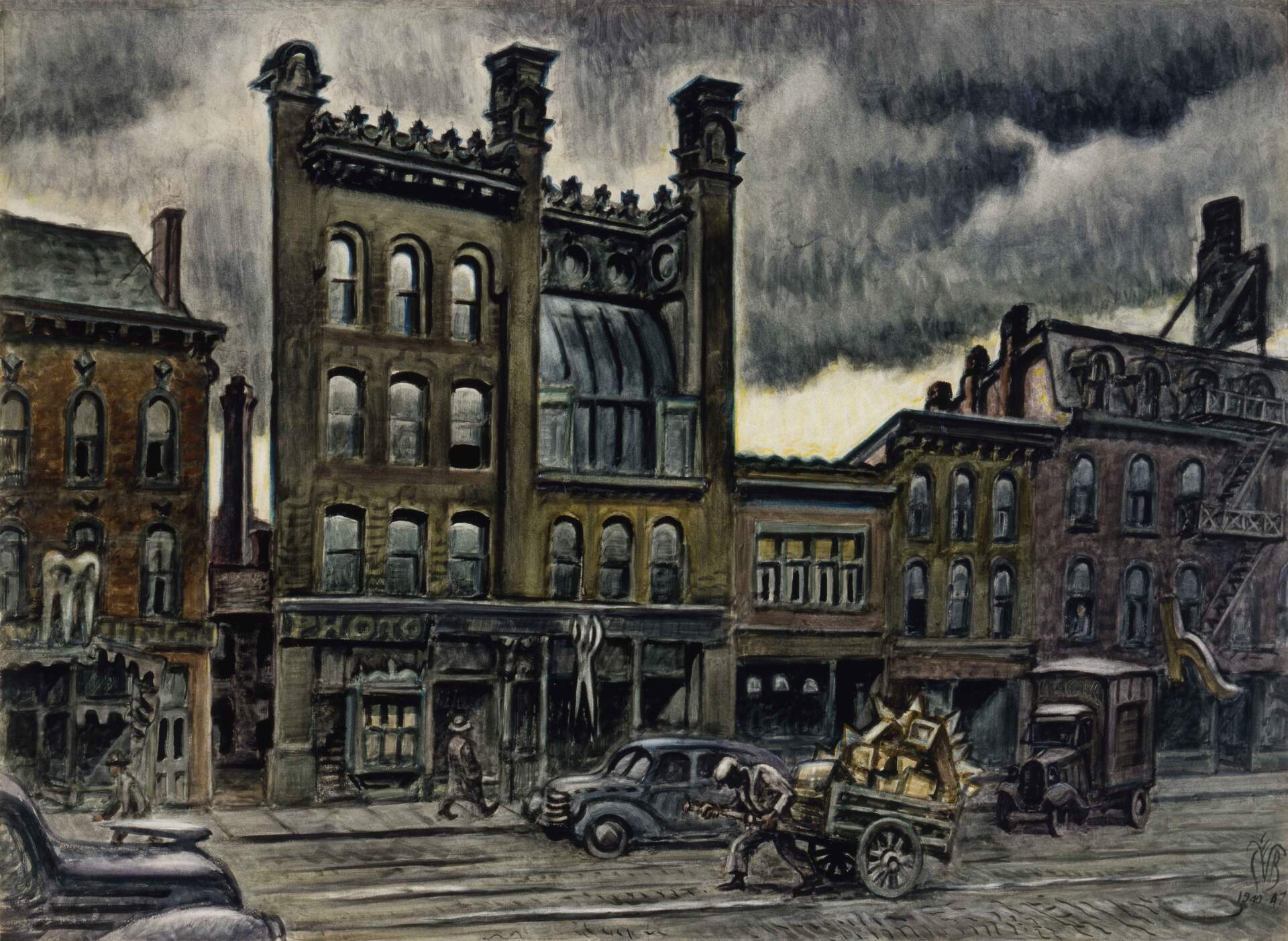
Charles E. Burchfield (1893-1967), Street Scene, 1940-47; watercolor on paper, 39 1/8 x 53 inches; Dallas Museum of Art, Dallas Art Association Purchase, 1953.57
Charles E. Burchfield, Journals, May 10, 1947
Tuesday, May 10, 2022
In studio—studying the “Genesee St. Bldg.”—and “Lavender & Old Lace”—I will have to add 5” to the top of the latter—
Check from [Frank Rehn] for “Backyards in Spring”
Evening—the N.Y. Philharmonic Concert, Dimitri Mitropoulos was conducting.
For the first time we sat in the balcony (as an experiment) I did not know whether it was that up there we got the full impact of the orchestral sound better than on the floor, or whether it was the superior playing of Mitropoulos; at any rate, when he played the Sibelius Second Symphony I realized from the very beginning that I had never really heard it before; (in fact since, I have wondered if I ever really heard fully, orchestral music at all before). How I wish that I could put into words the tremendous experience that we had (for B shared my feeling)—Every instrument, every group or choir came forth clearly and strong, in all their elemental power & beauty—Mitropoulos brought out all the savage quality (at times almost raucous) that before (for me) had lain dormant in this music. And at the end of the Fourth movement the fortissimo of the brass was so tempi (and yet so clean & clear) that it seemed as if the ears would “split”—One could feel the actual physical pressure of sound beating in from all sides. Now at last I know how great Sibelius is—
We were tempted to leave at the intermission, but happily, we did not, for the Strauss Rosenkavalier waltzes proved very beautiful too. Wagner’s “Prelude to Die Meistersinger” which closed the program seemed very commonplace & tame (although well played) after what had proceeded.
I could hardly go to sleep.
Charles E. Burchfield, Journals, May 10, 1947